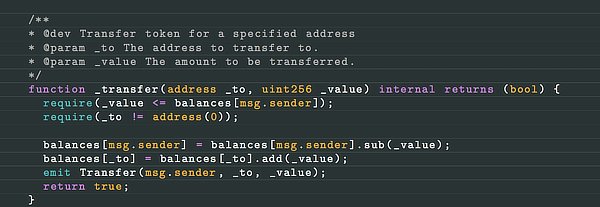
“Efficiency and integration may be dull, but they are powerful limiters of our potential.” So says Paul Brody, Principal & Global Innovation Lead at Ernst & Young (EY) before adding:
“Done right, our hope is that blockchain not only creates enormous benefits, but distributes them in a fair manner – instead of delivering enormous gains to centralized market operators, decentralized networks will share the benefits of digital collaboration back to all the market participants.
Though recent history does keep suggesting that optimism about the broader social impact of technology is frequently misplaced, that will not deter us from trying again.”
He lays out a vision of the public blockchain providing in effect a market place for global corporations and start-ups alike to transact with each other in buying, selling and managing inventory, parts, and so on.
Taking Uber, for example, that’s basically just an app or a portal as Brody calls it whereby individuals through the Uber intermediary order a taxi, make a payment, and manage the journey.
Something similar happens in enterprises where a company outsources some of its work for example. Portals have not taken off here, however, because someone has to own that portal and that someone would dominate the market and use that to their advantage, thus enterprises don’t trust such platform.
“Blockchains have one trick that is more magical and revolutionary than anything else they do: they can execute transactions and business logic across a network without requiring a central authority to validate and complete that work. Same symphony, same music, no conductor,” says Brody before further adding:
“Everything that companies cannot do with Electronic Data Interchange (EDI), and all the things they want to do with web portals are possible with blockchain, without the danger of handing over strategic business information to a potential competitor.”
To facilitate this potential Uber for enterprises, they have launched an open source set of code called Nightfall which uses zk-snarks to maintain privacy in ethereum blockchain interactions between businesses. The whitepaper says:
“By using zk-SNARKs, we can keep the to and amount inputs private between the sender and receiver.
The sender (or ‘Prover’) runs a slightly different computation privately on their own computer. They pass private inputs into this computation and get a set of public outputs which they will share with the blockchain.
These public outputs will appear as unreadable encrypted values to all observers; only the sender and receiver will be able to interpret their full meaning.”
The way this works is that basically you send your eth based token or even eth itself to a smart contract that is basically a blackhole. They call it a shield, but it’s a blackhole in as far as no one knows what’s going on in this smart contract anymore except for the parties transacting and only for their transaction.
The smart contract utilizes very complex maths that… well creates a blackhole. So what you’d have is eth going into the blackhole, then the blackhole itself where we know nothing, and then the eth comes out of the blackhole and goes on hanging around the public blockchain like a normal eth coin.
So the idea here presumably is that you tokenize, or better said abstract, anything really. Goods, services, whatever is relevant to the business. So effectively creating a database where instead of having “car” as a table or entry field in MySQL, you have car-token.
Then through smart contracts you can say if cars sold 1,000 then price whatever and because of zk-snarks, no one can see what the price is.
Uber itself is of course just a database, but because Uber is the only one that has access to this database and runs it, they have considerable leverage over drivers.
Enterprises want autonomy as usually it is a highly competitive market, so with ethereum you can potentially have a decentralized database owned by no one where businesses can more efficiently interact in a peer to peer manner.
“Public blockchains will be a productivity revolution, just not the kind you were expecting,” says Brody before adding:
“This is not the burn-down-the-banks and end-the-tyranny-of-money kind of revolution some were hoping for…
With blockchains, all we have to lose is our administrative complexity and transaction reconciliation paperwork.”
This all looks like it’s at very early stages. Presumably there would have to be some sort of interface and here anyone can run the interface himself. Meaning it would be kind of a node, rather than a centralized website.
Through this interface then much can be done by clicking buttons, calling templates and so on. With enterprises doing what they currently do, but just more efficiently.
Whether it would work as far as this use case is concerned remains to be seen, with the project having disclaimers about the code not being quite ready yet for production use.
But as consultants for very big companies, EY presumably has very good reasons to think it would work. Although it does look like to get it to in-production usage, there is quite a bit more left to be done.
Copyrights Trustnodes.com
OhNoCrypto
via https://www.ohnocrypto.com
Trustnodes, Khareem Sudlow
